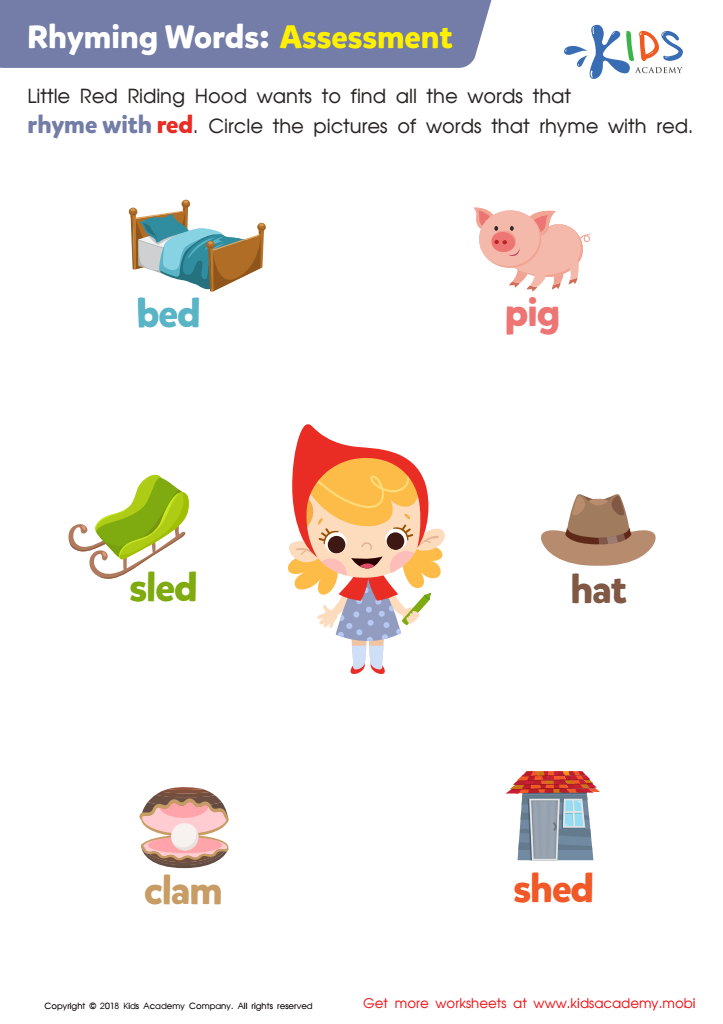Normal Rhyming worksheets activities
1 filtered results
-
From - To
Discover the Fun with Our Normal Rhyming Worksheets Activities!
Dive into the world of sounds and syllables with our engaging Normal Rhyming Worksheets Activities! Designed to captivate and educate, these worksheets offer a variety of activities that are perfect for young learners eager to explore the magical realm of rhymes. From matching games to fill-in-the-blank exercises, our collection is tailored to improve phonemic awareness, enhance vocabulary, and bolster reading skills in a fun, interactive way. Ideal for both classroom and at-home learning, these activities promise to make the journey of mastering rhymes an absolute delight. Start your adventure today and watch your little ones fall in love with the rhythm of words!


Rhyming Words: Assessment Worksheet
Normal Rhyming worksheets activities serve as a fundamental tool in the linguistic development of children. These activities are meticulously designed to engage young learners in the exploration of sounds, which is pivotal in enhancing their phonological awareness. By participating in Normal Rhyming worksheets activities, children gain the ability to recognize and generate words that have similar ending sounds, a skill that lays the groundwork for proficient reading and writing in their later years.
One of the most compelling advantages of Normal Rhyming worksheets activities is their role in vocabulary expansion. As children encounter rhymes, they are introduced to a plethora of new words, enriching their language and comprehension. This exposure not only boosts their linguistic repertoire but also nurtures a curiosity about words, encouraging them to delve deeper into language learning.
Furthermore, these activities are instrumental in refining listening skills. To identify rhyming words, children must listen attentively to the sounds within words, differentiating between those that rhyme and those that do not. This heightened auditory discrimination fosters better listening habits, which are crucial for effective communication and academic success.
Normal Rhyming worksheets activities also foster cognitive development. They require children to engage in pattern recognition, a mental process that enhances problem-solving and analytical skills. By discerning the rhythmic patterns in rhymes, children sharpen their cognitive abilities, benefiting their overall intellectual growth.
Additionally, these worksheets make learning enjoyable. The playful nature of rhymes captures children's interest and sustains their engagement, making the learning process feel more like play. This positive association with learning can foster a lifelong love for reading and literature.
In conclusion, Normal Rhyming worksheets activities are invaluable in the educational journey of children. They not only facilitate linguistic and cognitive development but also cultivate a positive attitude towards learning. By integrating these activities into early education, we can lay a strong foundation for our children's future academic endeavors.

 Assign to the classroom
Assign to the classroom












